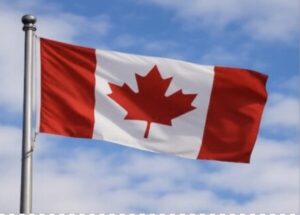Introduction to Express Entry Step by Step Guide
Immigrating to Canada is a dream for many, and the Express Entry system has made this process faster and more accessible. But what exactly is Express Entry, and how does it work? If you’re planning to settle in Canada permanently, understanding this system is your first step. This step-by-step guide will walk you through everything you need to know about the Express Entry application process, ensuring you’re fully prepared for each stage.
What is Express Entry?
Canada’s Express Entry system is a points-based immigration process designed to fast-track the application process for skilled workers who want to live and work in Canada. The system is used to manage applications for three major immigration programs.
Programs Managed Under Express Entry
- Federal Skilled Worker Program (FSWP): For candidates with significant work experience in professional roles.
- Federal Skilled Trades Program (FSTP): Tailored for skilled trade workers in occupations like electricians, welders, and carpenters.
- Canadian Experience Class (CEC): Designed for individuals with work experience in Canada.
Step-by-Step Process of Applying
The Express Entry system may seem complex at first, but breaking it down into steps makes it easier to understand.
Step 1: Determine Your Eligibility
Before applying, ensure you meet the eligibility criteria for one of the three Express Entry programs. Use the following benchmarks:
1. Work Experience
- Federal Skilled Worker Program (FSWP): Requires at least 1 year of full-time paid work experience (or equivalent part-time) in a skilled occupation (TEER 0, 1, 2 or 3) within the last 10 years.
- Federal Skilled Trades Program (FSTP): Requires at least 2 years of full-time work experience (or equivalent part-time) in a skilled trade (TEER 2 OR 3) within the last 5 years. Eligible trades include Major Groups 72 (excluding Sub-Major Group 726), 73, 82, 83, 92, 93 (excluding Sub-Major Group 932), Minor Group 6320, and Unit Group 62200.
- Canadian Experience Class (CEC): Requires at least 1 year of full-time (or equivalent part-time) work experience in Canada in a skilled occupation (TEER 0, 1, 2 OR 3) within the last 3 years.
2. Language Proficiency
- FSWP: Requires a minimum CLB 7 (Canadian Language Benchmark) in all 4 language skills (speaking, listening, reading, writing) in either English or French.
- FSTP: Requires CLB 5 in speaking and listening, and CLB 4 in reading and writing (English or French).
- CEC: Requires CLB 7 for TEER 0 or 1 jobs, and CLB 5 for TEER 2 or 3 jobs.
3. Education
- FSWP: Must have at least secondary school diploma (high school) or higher education. If obtained outside Canada, an Educational Credential Assessment (ECA) is required.
- FSTP: No specific education requirement, but a valid job offer or a certificate of qualification in the trade from a Canadian province/territory is mandatory.
- CEC: No education requirement for eligibility, but higher education can boost your CRS score.
4. Proof of Funds
- FSWP: Must show proof of funds to support yourself and your family unless you have a valid job offer or are already employed in Canada.
- FSTP: Must show proof of funds unless you already have a valid job offer in Canada.
- CEC: No proof of funds required if you are already working in Canada at the time of application.
5. Other Key Requirements
- FSWP: Must score at least 67 points out of 100 based on factors like age, work experience, education, language skills, and adaptability.
- FSTP: Must meet the requirement for a valid job offer or certificate of qualification in your trade.
- CEC: Work experience must be gained while physically present in Canada.
Tools for Checking Eligibility:
- Express Entry Eligibility Tool: You can use the official Canada Immigration Eligibility Tool on the official government website to see if you qualify.
- Language Test: Take an approved language test to assess your language skills (e.g., IELTS (General), CELPIP (General), PTE Core or TEF & TCF). For more details, visit the IRCC Express Entry Language Test Results page.
Step 2: Create an Express Entry Profile
Once you have all necessary documents, you can proceed with creating your Express Entry profile.
- Visit the Immigration, Refugees, and Citizenship Canada (IRCC) website.
- Complete the online Profile after you sign in to your IRCC secure account. , including personal details, work history, education, and language test results.
- Submit your profile and enter the Express Entry pool.
Your profile remains active for 12 months, and you can update it anytime if your circumstances change.
Step 3: Receiving an Invitation to Apply (ITA)
Once in the pool, you must wait for a draw where candidates with the highest CRS scores receive an Invitation to Apply (ITA).
- The CRS score cutoff varies for each draw and depends on the number of applicants.
- If you receive an ITA, you have 60 days to submit your permanent residence application.
- If your score is low, consider improving your CRS score before the next draw.
After Receiving the ITA
After receiving an ITA, the real work begins. You now have to submit detailed documentation and complete official procedures.
Submitting Your Permanent Residence Application
Your Express Entry application must include:
- Identity documents (passport, birth certificate)
- Proof of Work Experience: You must provide reference letters from previous employers detailing your job duties, duration of employment, and salary.
- Language Test Results: Your IELTS, CELPIP, TEF, or TCF scores must be valid (within the last two years).
- Education Documents: Provide your education transcripts, diploma and if your education was completed outside Canada, an ECA is required to verify your credentials. Organizations such as WES, IQAS, and ICAS provide these assessments.
- Medical examination results
- Police clearance certificates (from all countries you’ve lived in for 6+ months since the age of 18)
- Proof of funds (bank statements, investment details)
Paying Application Fees
| Category | Fee (in CAD) |
|---|---|
| Principal Applicant | $1,525 |
| Spouse/Common-Law Partner | $1,525 |
| Dependent Child | $260 |
These are the current government fees. However, it’s important to always check for the most up-to-date fees, as they may change. All fees must be paid online through the IRCC portal.
Tips for Success
Maximizing Your CRS Score
If your CRS score isn’t high enough, consider these strategies:
- Improve Your Language Test Scores: Retake IELTS or TEF for better results.
- Gain More Work Experience: The more experience you have, the higher your score.
- Secure a Provincial Nomination (PNP): Provincial programs offer an extra 600 CRS points.
- Obtain a Job Offer: A valid Canadian job offer can add up to 200 CRS points.
Common Mistakes to Avoid in Your Application
- Submitting incorrect or incomplete documents
- Failing to meet proof of funds requirements
- Misrepresenting information (can lead to a 5-year ban)
What Happens After Submission?
Processing Timelines for Express Entry Applications
- Most applications are processed within 6 months.
- Processing times may vary based on the number of applications and background checks.
Post-Approval Steps
- Receive Confirmation of Permanent Residence (COPR)and Permanent Resident (PR) Card
- Prepare for Arrival in Canada (if you are outside Canada)
Once approved, you’ll be on your way to starting a new life in Canada!
Conclusion
The Express Entry system is one of the best pathways for skilled workers to become permanent residents of Canada. By understanding the process, maximizing your CRS score, and avoiding common mistakes, you can improve your chances of success.
If you’re unsure about any step, consulting an immigration expert can help streamline your application and increase your chances of getting an ITA.









1 thought on “How to Apply for Canada Express Entry – A Step-by-Step Guide”
Pingback: Express Entry Education Occupations Draw - May 1, 2025